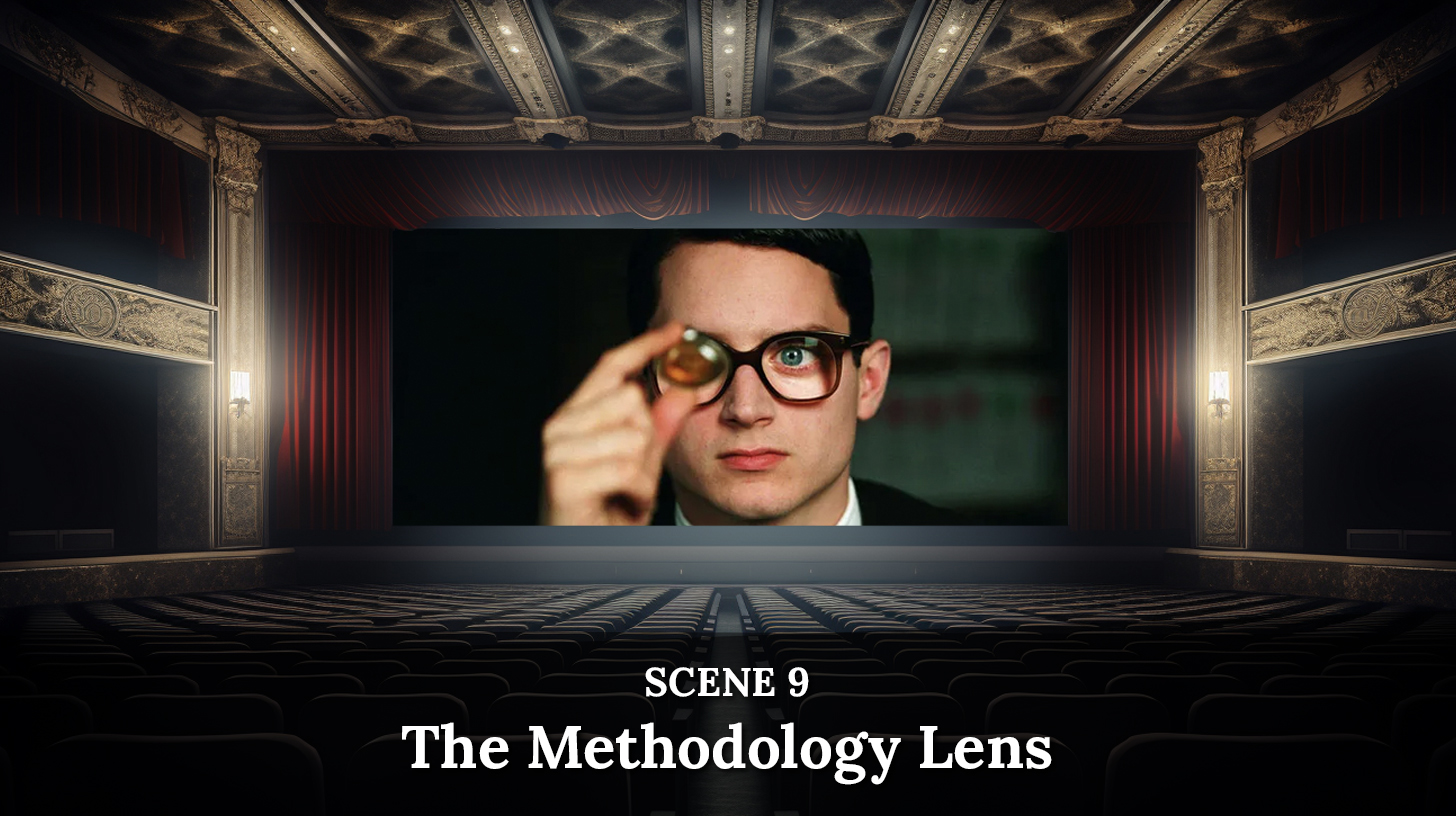
We now shift focus to that space between theory and practice where we find the constructs, paradigms, and approaches used to examine and enact our world and the world of cinema, using what I am calling the METHODOLOGY LENS. With this lens we can attempt to look at what methodological constructs are behind how we look and how we act, what method or approach we are using at any given moment to comprehend and relate to self, others, and world.
While this lens traditionally is associated with methods of research, the basic process we are talking about here reaches far beyond the scientist looking through a microscope or an anthropologist studying a culture, and includes the business person analyzing market results, the artist taking a unique approach to a subject, and anyone, real or characterized in a creative work, who is faced with a decision. Put another way, every perspective we hold, every choice we make, and every action we take has an individual or set of paradigms or constructs behind it that effects both our understanding of that perspective, choice, and action, as well as the actual process and outcome.
In the Integral approach we can use three different frameworks or perspectival arrays, to view these methodological paradigms and enactments. Each perspectival array helps us to explore deeper and more complex dimensions of this domain; from a very simple perspectival array of 1st-, 2nd-, and 3rd-person perspectives (called the Big Three in Integral Theory), to the Quadratic Lens array which adds the 3rd-person-plural perspective, and finally to the Zonal Lens which opens up our perspective to the inside and outside dimensions of these perspectives.
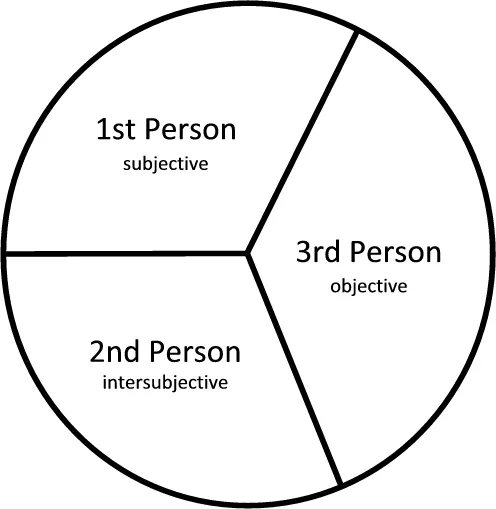
The Big Three of 1st-Person, 2nd-Person, and 3rd-Person Perspectives
Using a basic Big Three Methodology Lens array we can take a look at how we or a screen character in a cinematic work makes a decision. For example, do we or the character use a 1st-person inner-intuitive/subjectivity-based, 2nd-person consensus/intersubjectivity-based, or 3rd-person analytical/objectivity-based decision making approach? In the cinema, these methodological constructs can be used in a progressive manner within a character’s story arc to create a deep and felt-sense of character growth or evolution. For example, in the film Everything is Illuminated (2005), the main character is on an investigative quest to uncover his and his family’s history that takes him from a 3rd-person approach or method of collecting both directly-connected and obscure family-related objects, to a 2nd-person communal journey of uncovering shared memories and stories with his travel guides, and finally, to a 1st-person inner reflection and revelation process. This process is intensified by the use of various other cinematic structures that help to echo and deepen these dimensions.1
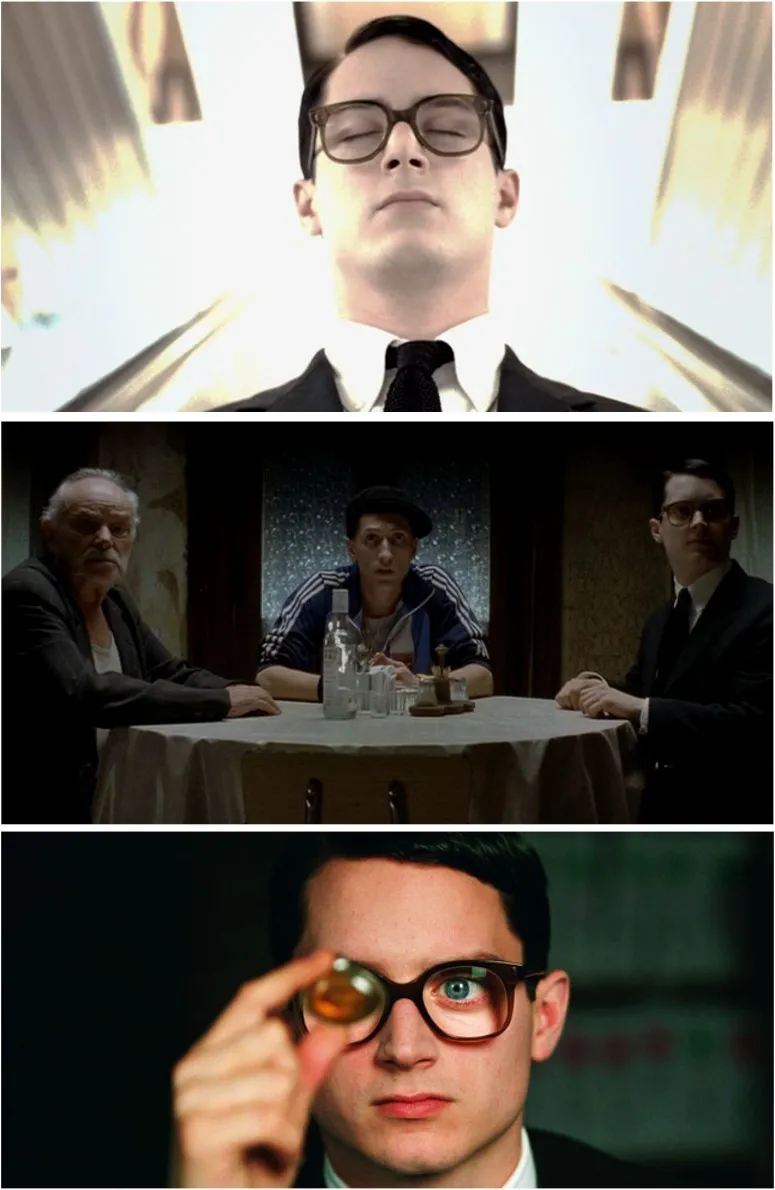
Everything is Illuminated (2005) and the Progressive Use of 3rd, 2nd, and 1st Person Methodologies in Character Development and Cinematic Structures
Using the Quadratic Methodological Lens array we can see how this lens can be applied to both content and the creative process itself.
For example, if we use this lens to look at the various knowledge domains within the Hollywood movie industry, we could divide the industry into four general knowledge domains or communities within the world of Hollywood movie making, each with their own, often conflicting paradigms, practices, injunctions, and constructs of what makes a “good” movie.
- There is the Cinematic Artists Community, which tends to view the goodness or success of the cinematic work by how much of the artist’s subjective vision (UL) is successfully translated onto the screen.
- There is the Cinematic Technicians Community, which evaluates the degree of technical/material/objective (UR) quality of the cinematic work.
- There is the Cinematic Business Community, which appraises the success of the cinematic work by its market reach and profitability within the economic system (LR).
- Finally, there is the Cinematic Analytical Community (critics, historians, and theorists), which evaluates the quality of the cinematic work by the theoretical and historical contextual effectiveness of its cinematic language (LL).
Put another way, looking through the Quadratic Methodological Lens array, there appears to be four methodological approaches to evaluating and enacting a cinematic work within the Hollywood system, which can be correlated to the discreet yet interrelated domains of ART, CRAFT, THEORY, and BUSINESS.2
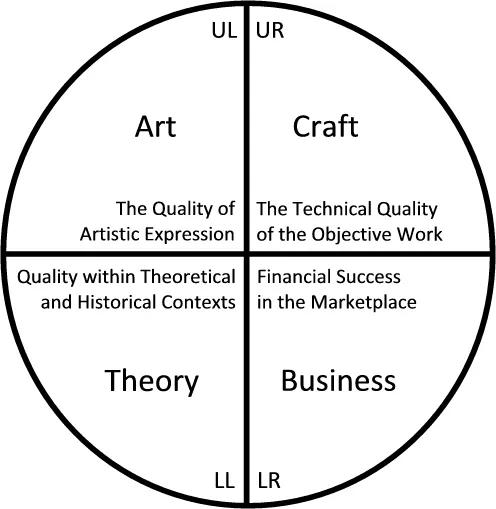
Quadratic Mapping of the Four Methodological/Knowledge Domains of the Motion Picture Industry
In the history of the film industry, conflicts have often arisen between individuals and groups within these domains or communities, and their seemingly contrary social practices/injunctions and the constructs generated by them.3 It does appear that some individuals tend to associate themselves and/or others with one of these domains, seeing a separation between the artist, technician, theorist, and businessperson; while some are able to hold more than one of these constructs as it relates to themselves, others, and their work; and some also appear to be able to integrate all four methodological/perspectival domains.

Chariots of Fire (1981) and the Integration of the Methodologies of Cinematic Creation
An example of this type of methodological integration can be seen in the case of internationally-acclaimed award-winning motion picture producer David Puttnam, whose producing methodology included the finding and nurturing the development of what he perceived to be a story of high artistic and technical quality with cultural and social resonance; along with the bringing together of the best artists and technicians who fit together into a synergistic team; and in conjunction with the creation and management of a safe and creative environment for the cast and crew to work in, within the boundaries of reasonable fiscal constraints.4
With this integrally-informed methodological formula Puttnam was able to produce several films that were deemed simultaneously successful by all four of the industry’s knowledge communities. These cinematic works included films like Midnight Express(1978), Chariots of Fire (1981), and The Killing Fields (1984), all of which were considered to be artistically, technically, theoretically, and financially successful works with both cultural and social resonance.5
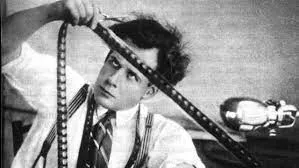
Russian Filmmaker and Film Theorist Sergei Eisenstein and the Methodologies of Cinematic Inquiry
We can also use the Quadratic Methodological Lens array to take us deeper into each of the four methodological/knowledge domains of the creation and reception of the cinema (Art, Craft, Theory, and Business), exploring the various methodological paradigms and constructs that tend to be used by cinematic artists, technicians, theorists, and business people, including: Methodological approaches to writing, directing, acting, cinematography, sound, production design, and editing; critical, historical, and theoretical analysis; and producing, distribution, marketing, exhibition, and artist and property representation and negotiation.
For example, in the cinematic theory domain we can potentially map and integrate the major cinematic theories used for critical, historical and theoretical analysis into four major categories of approaches:
- Analyses of the 1st-Person domain of the cinematic experience of both creators and viewers (i.e., Phenomenological, Psychoanalytical, Cognitive, Auteur, and Reception theoretical approaches);
- Explorations of the 2nd-Person realm of the language or communicative aspects of individual and collective cinematic works (i.e., Hermeneutic, Semiotic, Structuralist, and Genre Studies approaches);
- Examinations of the 3rd-Person dimensions of the material forms and properties of the medium and their effects (i.e., Formalist and Realist approaches);
- Considerations of the 3rd-Person Plural aspects of the social and environmental milieu or contexts of individual and collective cinematic works and the medium itself (i.e., Ideological, Apparatus, Feminist, Marxist, and Social Penetration approaches).6
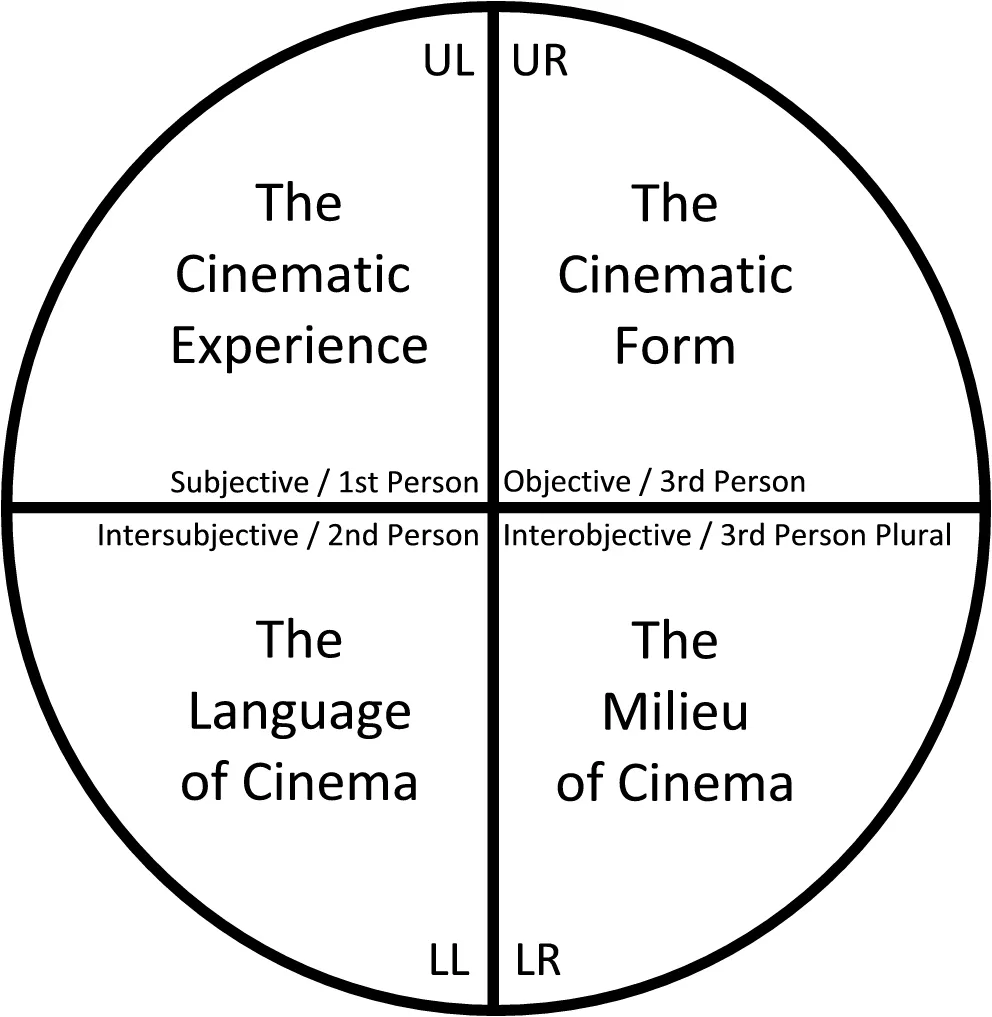
A Preliminary Quadratic Mapping of the Major Categories of Methodological Approaches to Cinematic Theoretical Inquiry7
We can attempt to unpack these approaches further using the Zonal Methodological Lens array,8 performing a preliminary break down of each of these four categories of theoretical approaches into inside/subjective or outside/objective perspectives of each domain, giving us 8 different zones of theoretical inquiry. For example:
- We can study 1st Person cinematic experiences from an Inside/Phenomenological (Zone 1) approach, examining the pure experience of viewer or creator, or we can take an Outside/Psychoanalytic or Cognitive (Zone 2) approach, analyzing the psychological structures at work within that same cinematic experience.
- In the 2nd Person language or communication pattern domain of cinematic analysis we can use an Inside/Hermeneutic (Zone 3) approach to study how different viewing audiences experientially interpret a cinematic work, or we can employ an Outside/Semiotic (Zone 4) approach to study the observable meaning making patterns and structures of a cinematic work.
- The 3rd Person domain of the material forms and properties of the cinematic work itself can be studied from an Inside/Formalist (Zone 5) perspective exploring how the various forms of the cinematic work, such as visual space or editorial rhythm, are used to elicit a specific experiential effect, or from an Outside/Realist (Zone 6) perspective analyzing how a cinematic work in particular or the medium in general, operates as a photographic representation of object reality.
- Finally, we can explore the 3rd Person Plural analytical domain of the milieu of cinema from an Inside/Ideological (Zone 7) approach studying the influence of social ideologies on the cinematic medium and individual and collective cinematic works, or we can take an Outside/Apparatus (Zone 8) perspective and analyze how the medium itself is an inherent mechanical/photographic representation of certain social and systemic structures.9
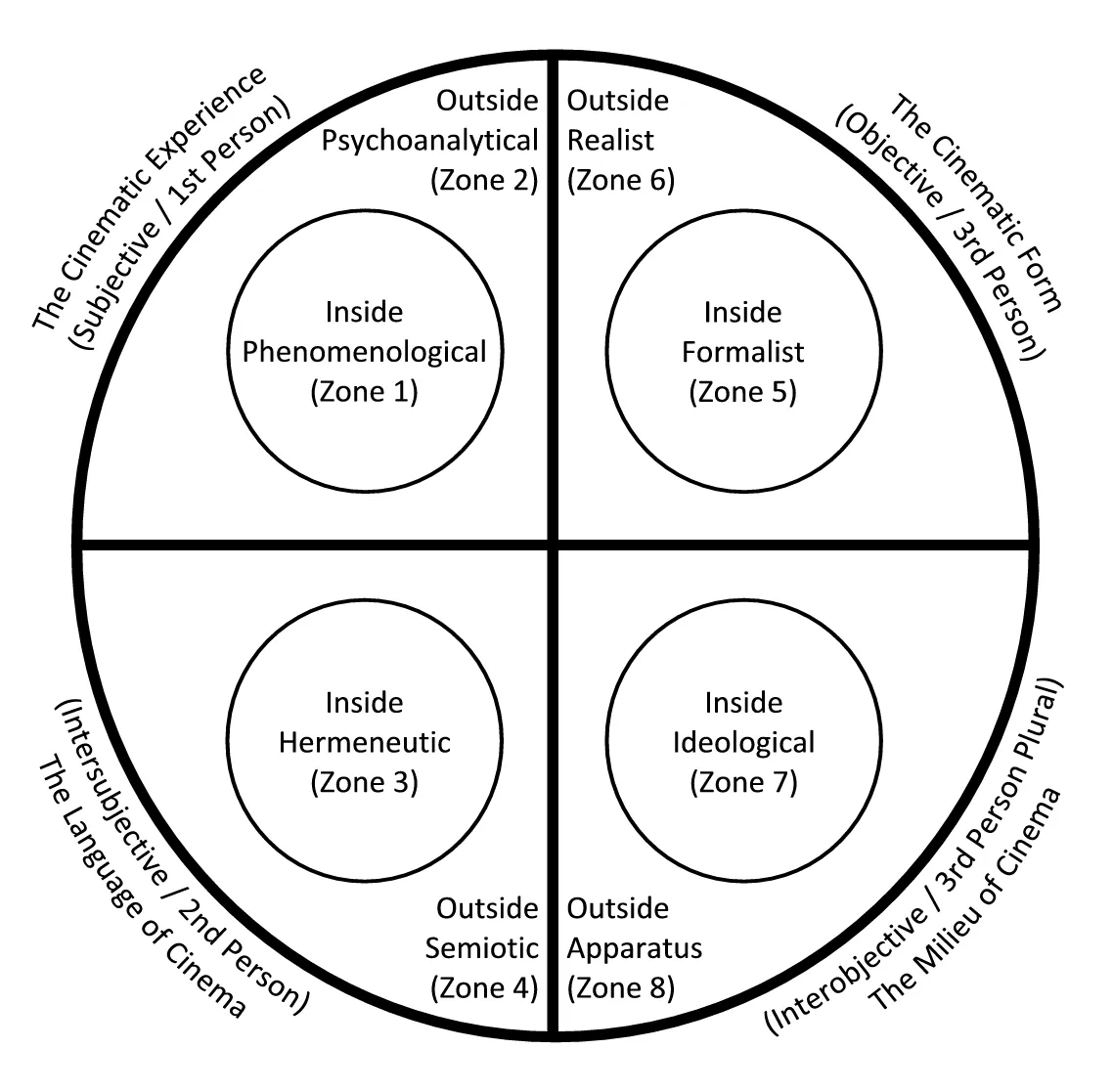
A Preliminary Zonal Mapping of the Major Categories of Methodological Approaches to Cinematic Theoretical Inquiry10
These methodological categories of cinematic inquiry are not entirely absolute in that while a specific theory or approach may tend to have as its central focus a particular domain, as noted above, they often include some perspectives and approaches from other analytical domains to a varying degree as well.
For example, while the Auteur Theory’s central focus is on the individual cinematic artist’s subjective vision (1stPerson/Subjective), this form of analysis may also include the use of explorations of this subjective vision in relation to the cinematic language, styles, and genres used by the artist (2nd Person/Intersubjective) or the influence of various social ideologies on the artist and their works (3rd Person Plural/Interobjective).
Additionally, some theories are actually derived from several other theories, giving them a more inherent multi-domain perspective, while still appearing to hold one particular domain as its central focus. A case in point is Apparatus Theory, derived from Marxist, semiotic, and psychoanalytic film theories, which uses perspectives and approaches from these multiple theoretical domains to explore its central analytical domain of the ideological nature of the mechanics of the medium itself (3rd Person Plural/Interobjective/Outside/Zone 8).11
Individual theorists who are associated with a particular approach also appear to utilize more than one type of approach within their work, while still displaying a tendency to give more weight to and focus on their particular theoretical domain and its corresponding paradigms and constructs over the others.
For example, celebrated Russian filmmaker and film theorist Sergei Eisenstein is known for both his work on the material properties and effects of the medium (3rdPerson/Inside/Zone 5/Formalist) and film milieu or context (3rd Person Plural/Inside/Zone 7/Ideological/Marxist), however, even in his 3rd-Person Plural context-oriented Ideological explorations he relates these directly or indirectly to the 3rd Person Formalist material form and function of the medium (i.e., how a particular cinematic form, such as editorial juxtaposition, can be creatively manipulated to communicate social ideology).12 Some theorists contribute so much to more than one theoretical domain that they can become associated with several theoretical traditions; such as in Eisenstein’s case, where he is considered a founding theorist in both the Formalist and the Marxist theoretical traditions.13
These methodological approaches to analyzing the cinema also appear not to be limited to film and media critics, historians, and theorists, but seem to also represent ways in which we the viewer reflect on our own cinematic experiences.
- We can ponder our own 1st person experience of a cinematic work (i.e., how a film made us feel and or how it revealed certain patterns in our own psyche);
- or we can have a debate about the 2nd Person communication process of the work (i.e., how our interpretation of a film differs from others or how our interpretation depends on our culture);
- or we could evaluate the quality of the 3rd Person forms of a cinematic work (i.e., how “good” were the cinematography, special effects, music, etc.);
- or we could appraise 3rd Person Plural social/systemic forces that have influenced a work (i.e., how a film was influenced by or makes a statement about technology, politics, economics, or various social ideologies such as feminist perspectives).

Heath Ledger as the Joker in The Dark Knight (2008) and the Methodologies of Character Development and Enactment
Bringing our attention back to the general and broad methodological/knowledge domains of art, craft, theory and business within the cinematic arts, it should also be noted that these domains and their associated constructs, paradigms and methodologies are often intimately enmeshed with each other; for example, acting is both an art and craft that has theories behind it as well as various business components for the actor to deal with in areas such as representation, management, and negotiation. The line between art and craft is an especially fluid one, and by using the Methodology Lens we can potentially begin to flesh out this dynamic by performing a preliminary quadratic and zonal mapping of the various creative and craft or skill-based methodologies that an actor can potentially use to develop and enact a character.14
Beginning with a preliminary quadratic mapping of the dimensions of character development and enactment, we can represent character as having the four basic dimensions of Personal, Relational, Physical, and Situational. In this mapping:
- The Personal denotes the dimension of the 1st Person subjective reality of the character;
- Relational refers to the 2nd Person intersubjective dimension of the character’s relationships with other individual characters and character groups such as family and cultural and sub-cultural groups;
- Physical is the 3rd Person objective dimension of character physicality and behaviors;
- Situational is the 3rd Person Plural interobjective dimension of the character’s relationship with past and current environmental, social-systemic, and accumulated life/story event realities.15
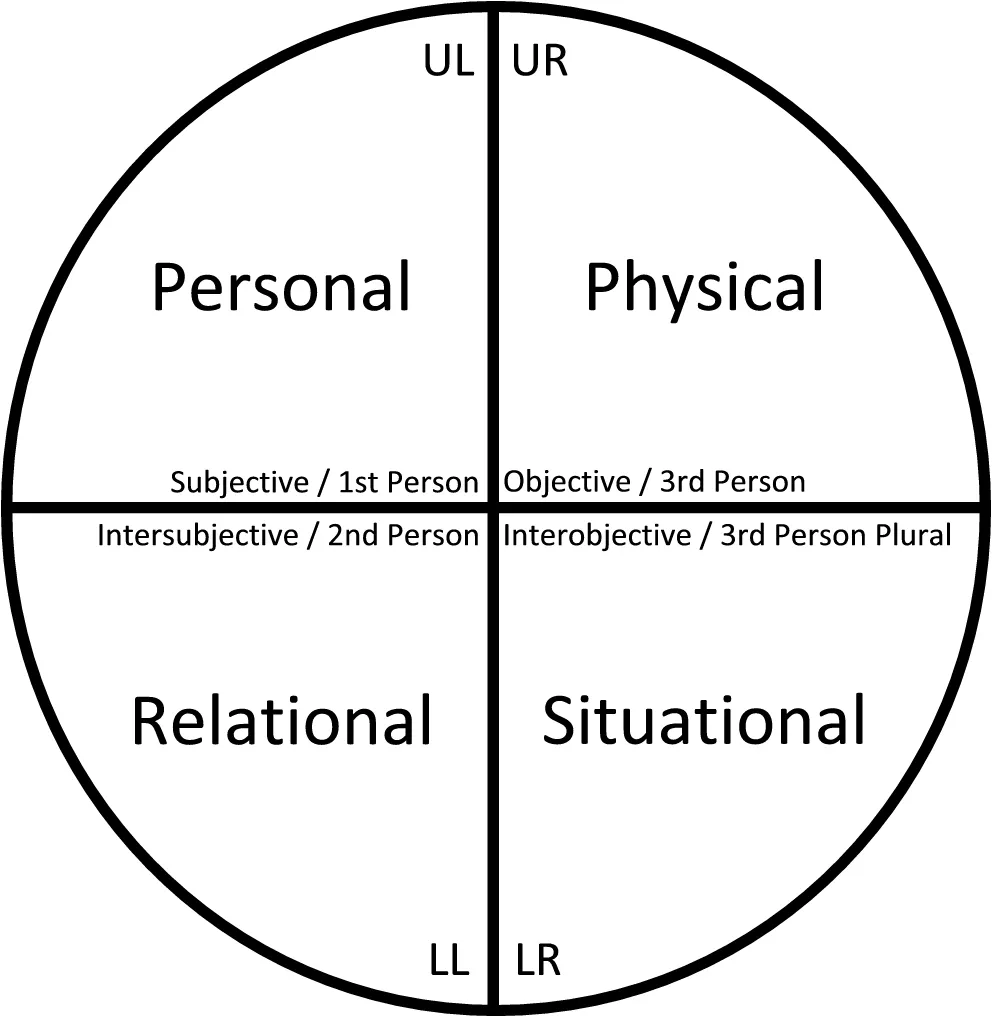
Preliminary Quadratic Mapping of the Methodological Dimensions of Character Development and Enactment
Using a preliminary zonal mapping of these four dimensions of character development and enactment, we can flesh out these domains more deeply by looking at their inside or experiential and outside or structural aspects or sub-dimensions (zones).
- In the Personal subjective dimension of character, the inside or experiential sub-dimension would be the pure awareness and consciousness of the character (Zone 1), while the outside or structural sub-dimension would be the personality dynamics of the character (Zone 2), such as their various lines and levels of psycho-spiritual development (i.e., emotional, moral, cognitive, etc.).
- The Relational intersubjective dimension would include the inside or experiential sub-dimension of the shared awareness and consciousness of two or more characters (Zone 3), and the outside or structural sub-dimension would be the relational dynamics of characters, along with familial and cultural influences (Zone 4), such as shared or conflicting communication types and cultural worldviews.
- In the Physical objective dimension of character development and enactment, the inside sub-dimension would be the realm of physical sensation or the sensory or somatic awareness of the character (Zone 5), while the outside sub-dimension would be physical structures such as the character’s observable behavior patterns, physical appearance, body type, posture, physical limitations, clothing, and their use of various other material objects (Zone 6).
- Finally, in the Situational interobjective dimension of the character’s relationship with past and current environmental, social-systemic, and accumulated life event realities, the inside sub-dimension would be the character’s situational sensation or their pure somatic-systemic awareness of this domain or how these situational aspects “feel” and are embodied by the character (Zone 7), while the outside would be their observable structures (Zone 8), such as the character’s physical environment, the social system in which they find themselves, and past and current events of the character’s life.16
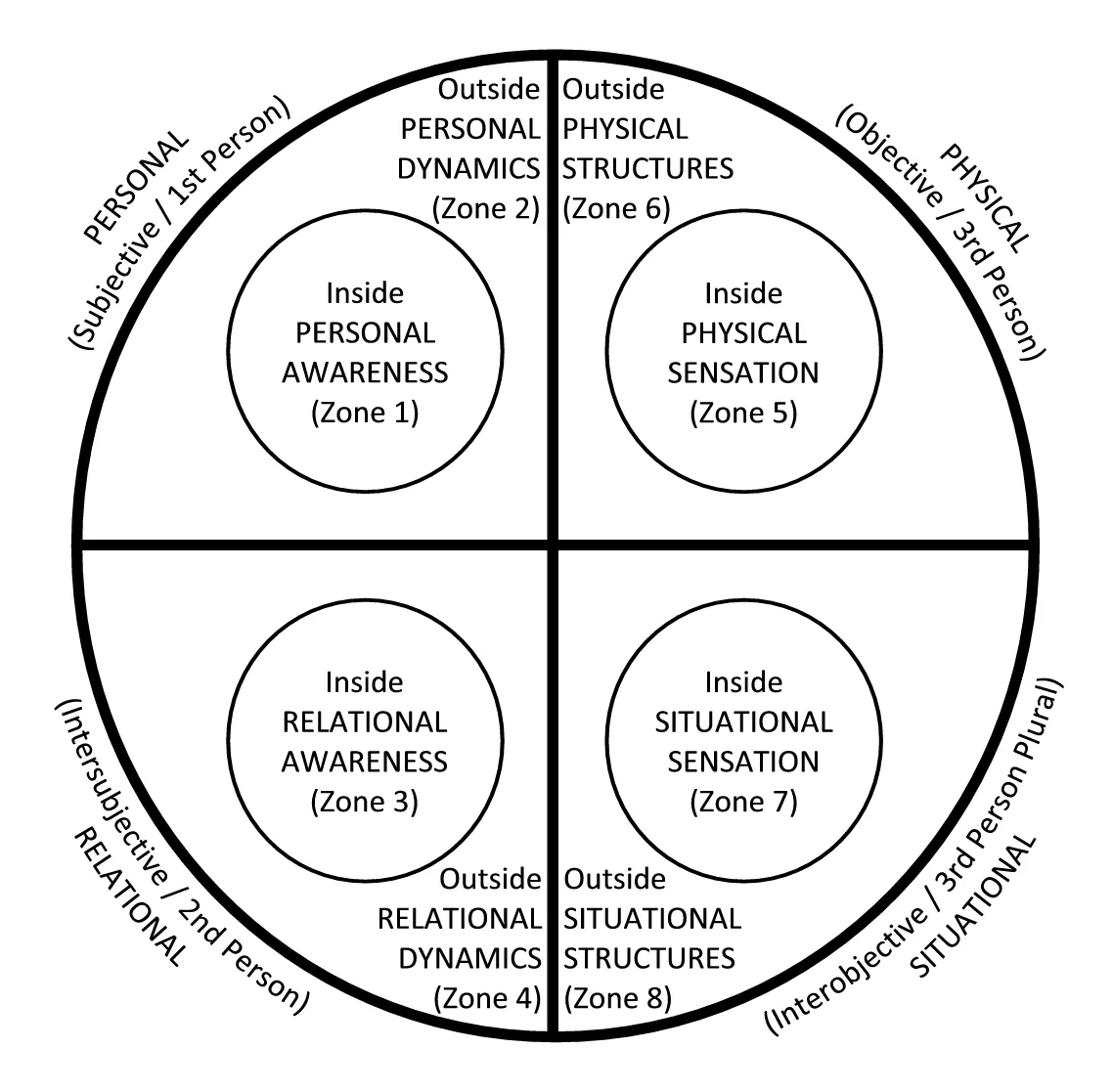
Preliminary Zonal Mapping of the Methodological Dimensions of Character Development and Enactment
It appears that the actor will either consciously or unconsciously use these dimensions and zones to build and enact their characters to a varying degree. Preliminary research suggests that a great performance by an actor will usually be one in which the actor fully inhabits all of these character dimensions and zones. For example, in the acclaimed performance of Heath Ledger as the character of the Joker in the film The Dark Knight(2008), Ledger physically embodies his character through the physicality of make-up, costume, body posture and movement (Zone 6), and through a powerful behavioral and physical sensory presence (Zone 5); inhabits the character’s inner psychological depth (Zone 2) and presence (Zone 1) through full-being expression; projects a powerful relational presence and force (Zone 3) that pervasively interacts with the other character’s and the cultural dynamics around him (Zone 4); and fully enlivens (Zone 7) and effectively reacts to the spaces and events around him (Zone 8).
Actors can use various techniques or methods to access these dimensions and zones, and will often use one dimension or zone to access another dimension or zone. For example:
- An actor might go from the outside to the inside of the Personal dimension of a character by exploring the psychological dynamics of that character (Zone 2) to get at their character’s pure awareness or consciousness (Zone 1);
- or they could use costumes, make-up, props and other physical elements (Zone 6) to help them get a feel for the character’s somatic-sensory reality (Zone 5);
- or they could also put themselves in the character’s environments and situations (Zone 8) to get a felt-sense for their situational dimension (Zone 7);
- or they could work with the other actors on their character’s relational and cultural dynamics (Zone 4) to get at their character’s relational awareness and presence (Zone 3).
There are also methods and approaches for going from the inside to the outside or from inner presence and sensation to outer dynamics, structures, and actions, as well as approaches for moving between the four major dimensions of Personal, Relational, Physical, and Situational (i.e., moving from the Personal to the Relational, etc.).17
One area where this movement between dimensions and zones seems to be particularly visible is in the difference between how an actor accesses these dimensions and zones with an original character as opposed to an actual real-life current or historical figure. When working with a character based on an actual person within the context of actual real-life events, the actor most often starts with very clear “outside” observable or established structures and dynamics of personality, relationships, physicality, and situations; while working with an original character can often call for a much higher degree of imagination and improvisation to build the character from the “inside” out, starting from the realms of personal, relational, physical, and situational awareness and sensation.18 While there is a clear craft- or technique-oriented aspect to this work, there are also profound and elusive creative or artist aspects of the work at the point where an actor shifts from the mechanics of the process into a full and deep embodiment of the character.
Using the Methodology Lens to explore this dynamic space between theory and practice in this or any methodological/knowledge domain of the cinematic arts does appear to have the potential for deepening our understanding of the constructs, paradigms, and approaches that tend to be used by cinematic artists, technicians, theorists, and business people, and in kind potentially offer a greater capacity for achieving a higher degree of quality and success in these domains by those who work in and explore this important medium.
Moving beyond these specific explorations of the Methodology Lens, we could also say that what we have been experimenting with here in this entire Integral Cinema Studio series is the development of a methodology of integral cinematic analysis using each of the integrally-informed lenses of cinematic perception and expression that have been explored as part of this series. Together, all these lenses could be said to make up a kind of Integral Cinematic Analysis Tool Kit, potentially offering a method of exploring the cinema from a deeper, more expansive integrally-informed perspective…or should I say perspectives, plural. I know this exploration has personally helped me to more fully and deeply understand the medium I love and have worked with for many years.
Notes
1 In the above example of the film Everything is Illuminated (2005), the Big Three-oriented methodological development of the main characters investigative quest along with its narrative structures is intensified by the use of various 1st person, 2nd person, and 3rdperson audio, visual, and temporal structures as outlined in the previous article on the Quadratic Lens. Note that the Big Three collapses the Upper Right (3rd Person) and Lower Right (3rd Person Plural) quadrants into a single 3rd person dimension-perspective.
2 The above quadratic mapping of the four methodological/knowledge domains of the motion picture industry into the discreet yet interrelated domains of ART, CRAFT, THEORY, and BUSINESS can also be seen as a quadratic array of two great polarities within the industry, that of ART and BUSINESS, and THEORY and PRACTICE. These polarities are often seen to be in conflict, both within and between individuals and groups in the industry.
3 For more on the historical conflicts related to these four methodological domains of the motion picture industry see, Film History: An Introduction (Thompson and Bordwell, 2009); Movies and Money (Putnam, 2000); and A History of American Movies: A Film-by-Film Look at the Art, Craft, and Business of Cinema (Monaco, 2010).
4 David Puttnam outlined his producing methodology in a Master Class in Producing at the American Film Institute in 1985-1986 which I attended, and was elaborated on in personal discussions with him as well. He also shares aspects of his approach and stories from some of his experiences in his book Movies and Money (Putnam, 2000).
5 The integrally-informed approach that David Puttnam attempted to use appears to reflect the basic principles of enactment, enfoldment, and nonexclusion that are at the heart of Integral Theory’s methodological framework, commonly referred to as Integral Methodological Pluralism (IMP). Nonexclusion refers to the capacity to “include the valid truth claims of every paradigm but only insofar as they make statements about the existence of their own enacted and disclosed phenomena and not the phenomena disclosed by other paradigms;” enfoldment holds that “all paradigms harbor truth, but some are more encompassing, more inclusive, and thus “enfold” others;” and enactment is the understanding that “no experience is innocent and pre-given; rather each is brought forth or enacted in part by the activity of the subject doing the experiencing. Therefore, one activity, paradigm, or injunction will bring forth a particular set of experiences for a person with one perspectival constellation, and possibly a different set of experiences for someone with a different constellation.” These principles allow for the integration of various methods, allowing them to co-exist within a harmonized action-oriented meta-methodology (Core Integral, Advanced Integral, Lesson 4, Methods).
6 For more on these and other film and media theories see The Major Film Theories(Andrews, 1976) and Film Theory and Criticism(Braudy & Cohen, 2009).
7 In the above mapping, the labeling of the Upper Right (UR) quadrant as The Cinematic Form is used to denote the domain of theoretical inquiry which focuses on the material elements, structures, and properties of the cinematic medium and how these quantifiably influence and effect the viewer, while The Language of Cinema (LL) label is intended to represent the domain of theoretical inquiry that focuses on the communicative and relational processes that occur between the viewer, the cinematic work, and the cultural forces within and between them.
8 For more on the zones as applied to the cinema see the previous articles on The Zonal Lens.
9 The above description of the inside and outside dimensions of 1st Person, 2nd Person, 3rd Person, and 3rd Person Plural domains is a preliminary break down of some of the different cinematic theory methodologies into the 8 zones of the zonal lens as illustrated in the above figure and in the table below. Note that this particular categorization of these various theories and approaches into the zones is one of many possible variations, and many of these theories can easily be placed in other zones, depending on our perspective. For our purposes here I am focusing on the general focus of the established theorists in each of these theoretical domains as I am currently interpreting them. For example, both the semiotic and formalist traditions focus on the cinematic work as a material artifact and could both be easily placed in the UR objective quadrant, however, the theorists in the film semiotics tradition tend to focus on how the structuring of various expressive elements form a language that produces an intersubjective communication process between the viewer and the cinematic artifact, while formalists tend to focus on the formal or technical elements, such of shot composition, lighting, and editorial pacing, and how these elements effect a viewer through the creative manipulation of their inherent autopoetic-like qualities (i.e., the inherent dialectic processes between form and function). Another example is that of the Ideological approach, which I have placed in Zone 7 (see above and below), because most of the theorists and writings related to Ideological film theory tend to focus on social/systemic ideological influences. There is also a great deal of exploration of cultural ideological influences which I am putting in Zone 4 under Cultural Studies.
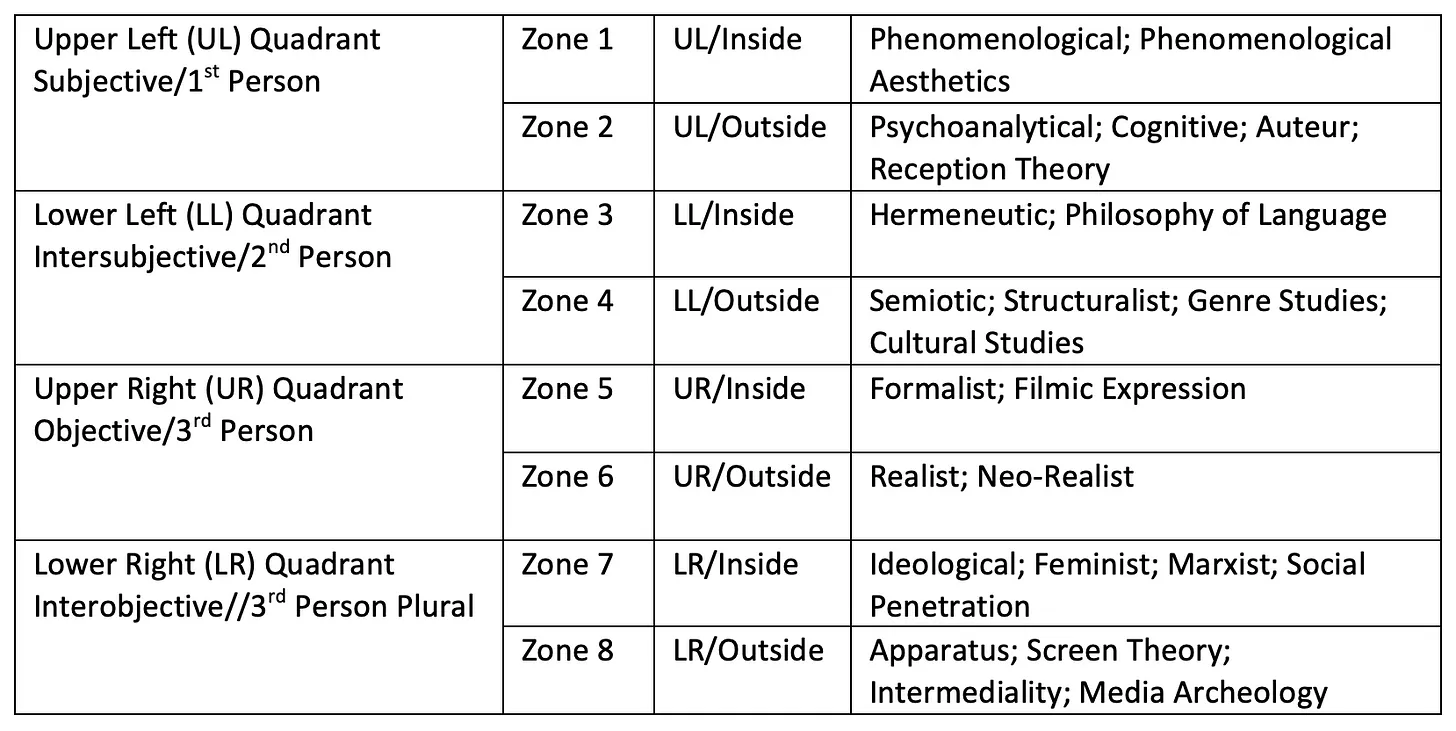
10 The above figure of a preliminary zonal mapping of the major categories of methodological approaches to cinematic theoretical inquiry uses one cinematic theoretical approach to represent each zone and it should be noted that these are not the only methods associated with each zone, as referenced above in the text and the table. In addition, as noted above, each method is associated with a zone by its central focus and will also often include the use of perspectives and methods from other zones as sub-focuses within its own theoretical domain.
11 This type of multi-domain theoretical perspective inclusiveness also appears to be part of a more recent postmodern trend toward more interdisciplinary and transdisciplinary approaches to cinematic theory, also bringing in methodological constructs and paradigms from disciplines outside of traditional cinematic theory including approaches such as Intermediality and Media Archeology.
12 For more on Sergei Eisenstein’s theories see Eisenstein’s Film Form and Film Sense(1969), and The Major Film Theories (Andrews, 1976) and Film Theory and Criticism(Braudy & Cohen, 2009).
13 In addition to some theorists using multiple theoretical domain perspectives within their own work, and some making a major contribution in more than one theoretical domain, there have also been some theorists who have more directly attempted to be holistic and integrative in their approaches, this includes the work of Jean Mitry (Andrews, 1976) and Edgar Morin (Morin, 2005).
14 Note that the actor is not the only cinematic practitioner who works with the development and enactment of screen characters; screenwriters, directors, and editors also work in this area and each of these practice domains have both similar and unique constructs, paradigms and practices related to this work.
15 The above preliminary mapping of the dimensions and zones of character development and enactment is one of many possible mappings.
16 For this particular mapping I am denoting the inside zones as experiential and the outside zones as structural due to the unique nature of character development and enactment for the actor, since the actor must both objectively (and structurally) understand and subjectively (and experientially) inhabit each of the four major dimensions of Personal, Relational, Physical, and Situational. Note also that the experiential zones for the right-hand objective and interobjective quadrants relate to sensory awareness or more specifically the “felt-sense” of physical and situational sensation, while the experiential zones for the left-hand subjective and interobjective quadrants relate to pure awareness or consciousness or more specifically personal and relational awareness. The inside or experiential zones are also related to subjective enactment modes such as imagination and improvisation, while the outside or structural zones are related to observation and analysis.
17 For more on the various acting theories and techniques see The Great Acting Teachers and Their Methods (Brestoff, 1996) and The Great Acting Teachers and Their Methods – Volume 2 (Brestoff, 2010).
18It should be noted that both imagination (inside) and observation (outside) are used for the development and enactment of all types of characters, including original and existing real-life characters, but each type of character requires different balances between observation and imagination. For more on this polarity between imagination (inside) and observation (outside) inherent in the work of the actor see The Way of the Actor: A path to Knowledge and Power(Bates, 2001).
 |
|
 |
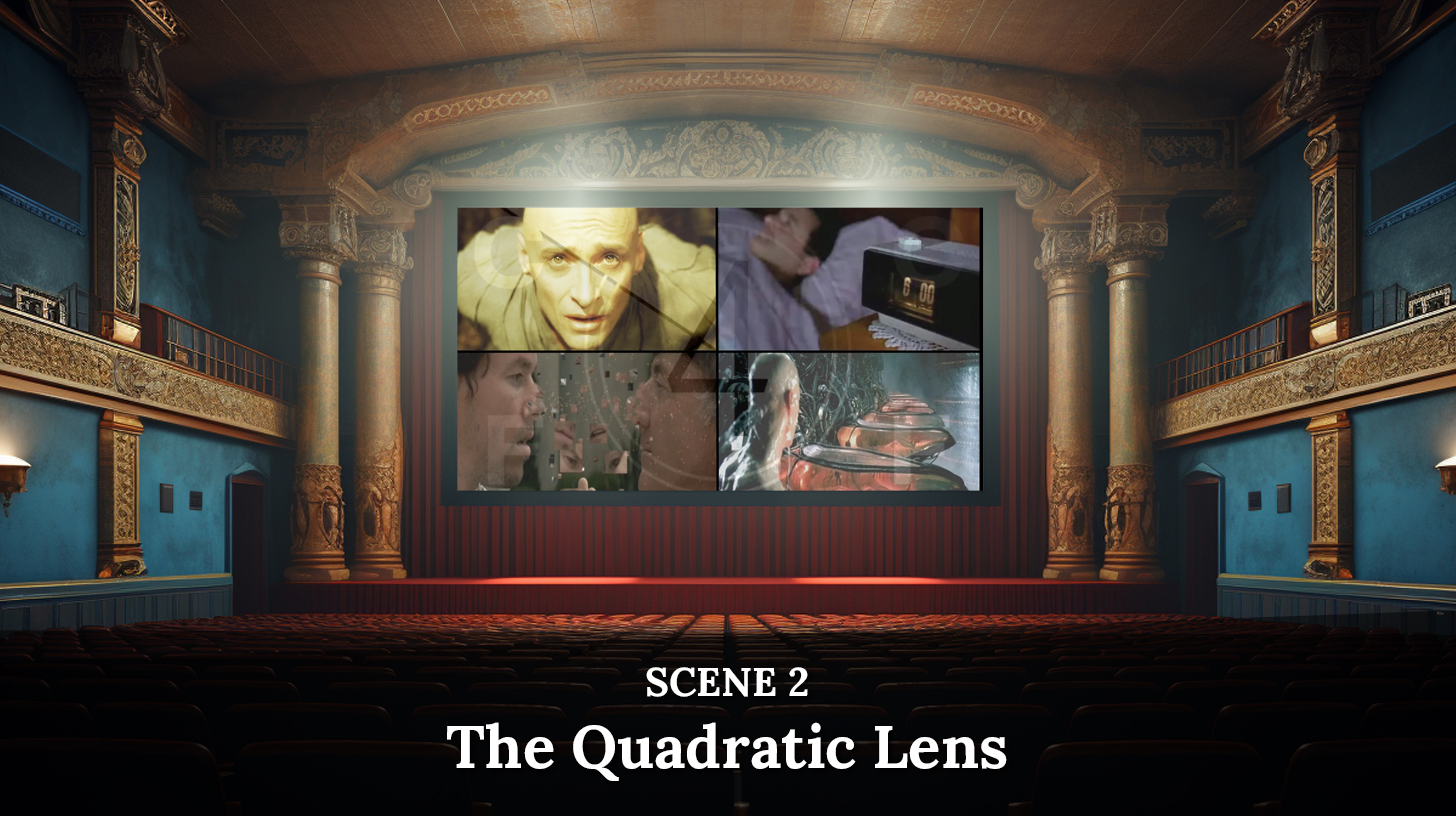 |
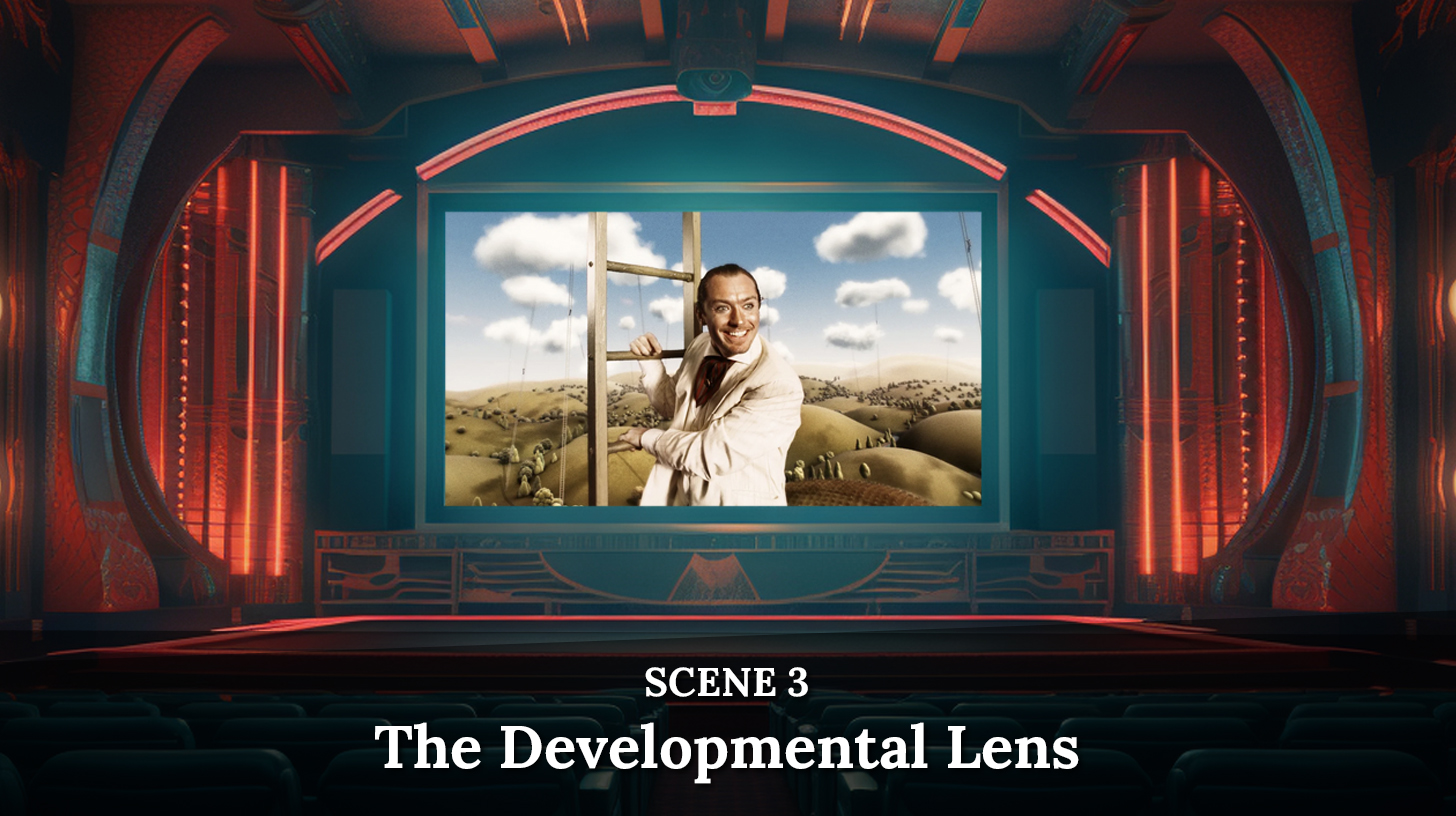 |
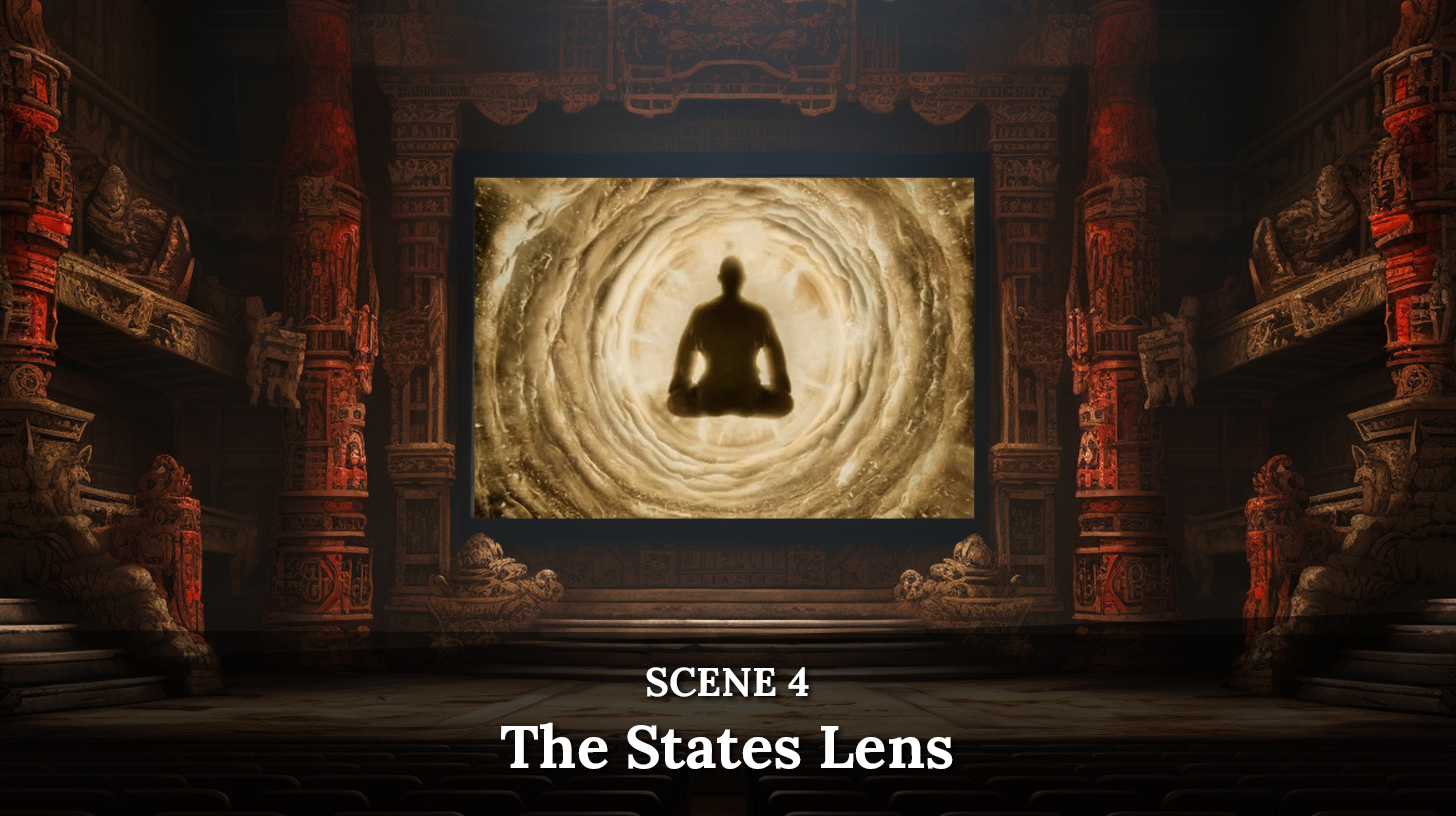 |
 |
 |
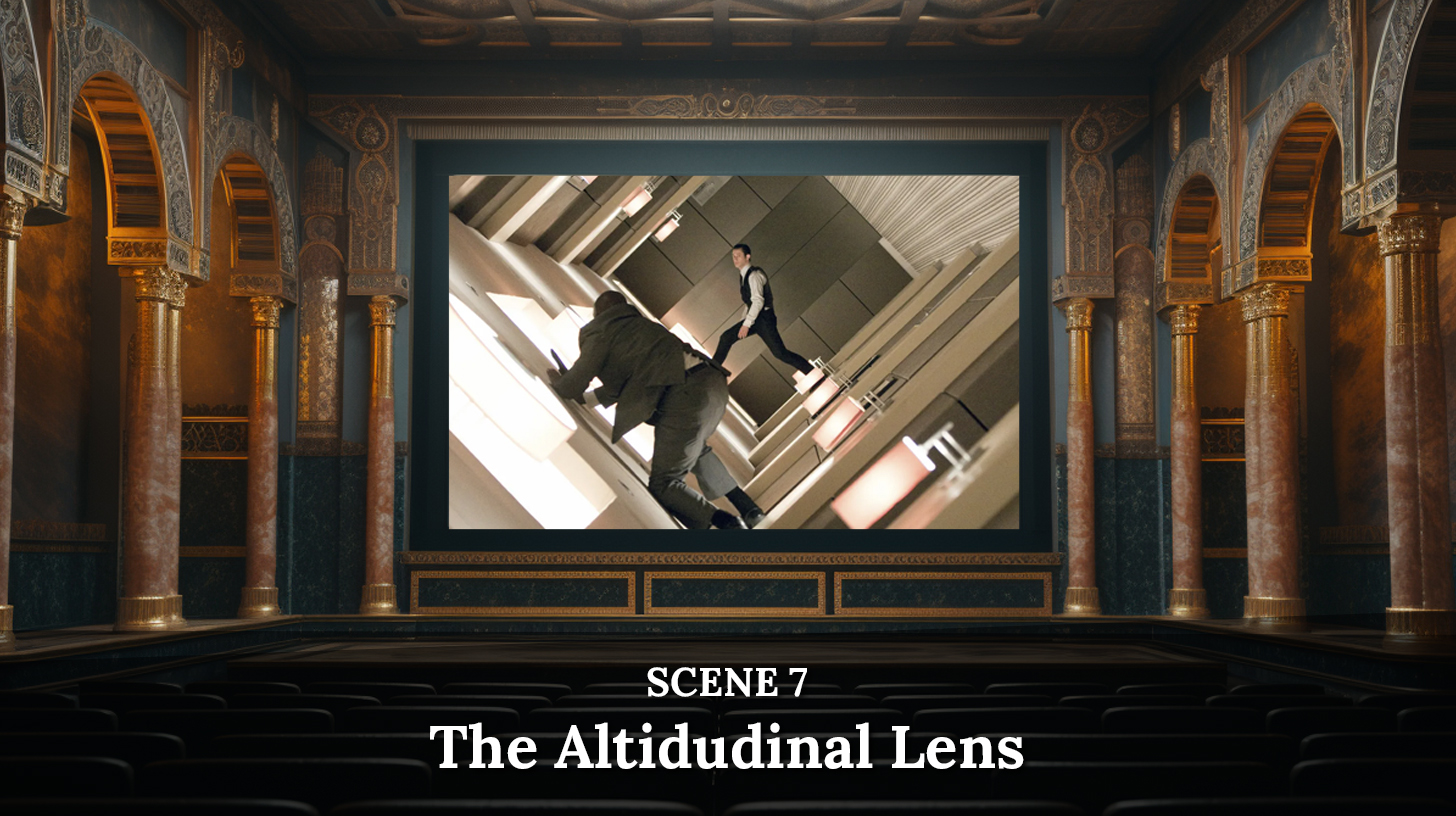 |
 |
 |
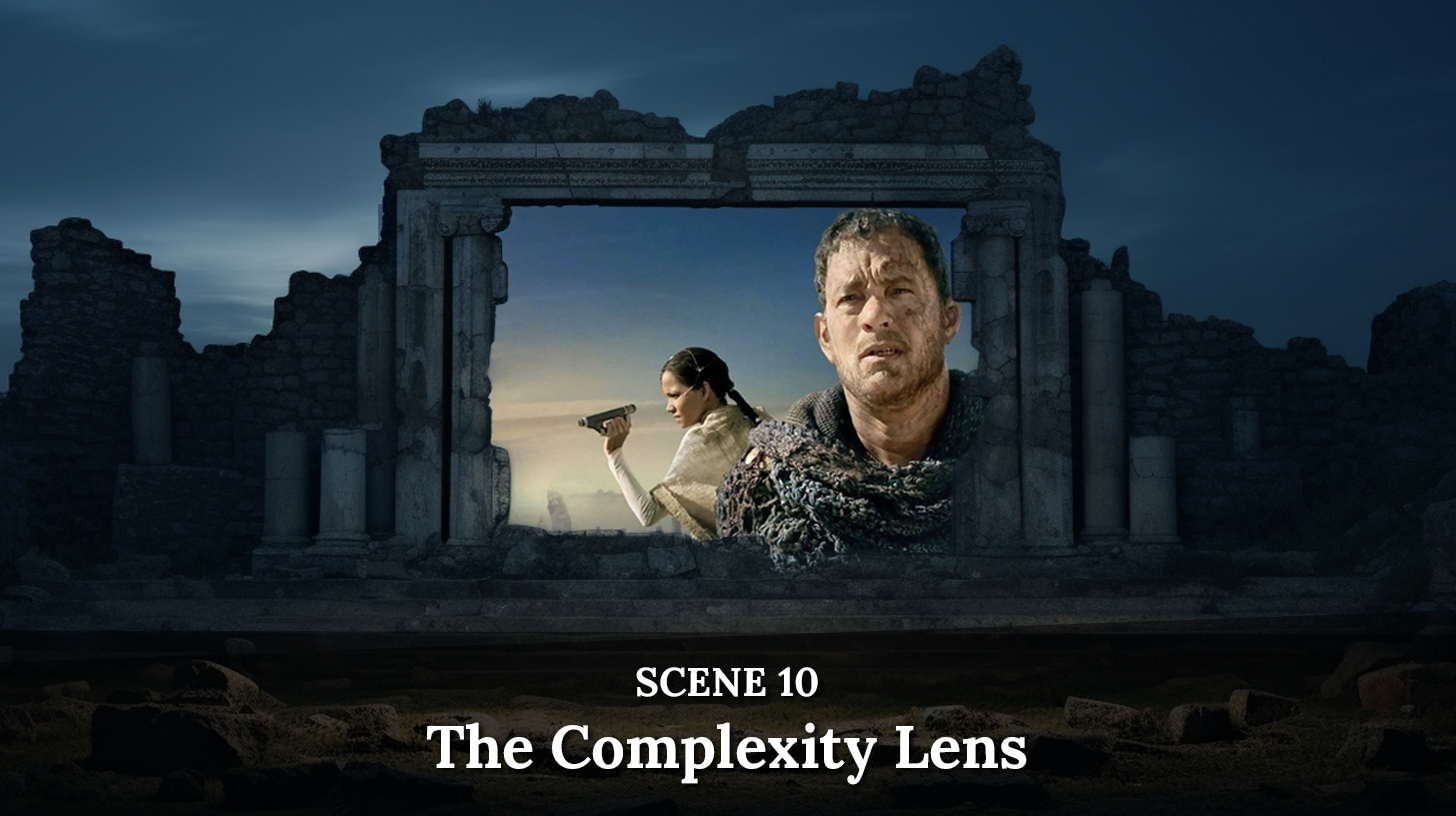 |
 |
|
Related Media
Toward an Integral Cinema
Mark Allan Kaplan
Defining characteristics of what may constitute an integral cinematic work are mapped out and developed into a set of evaluation criteria using the works of Dulac, Gebser, and Wilber. A test of these evaluation criteria with the viewing of several motion pictures is summarized; the results suggest that several past and recent films demonstrate qualities that could be said to constitute an integral cinematic work.
Integral Cinema Studio: A Comprehensive Guide to the Cinematic Experience
Mark Allan Kaplan and Ken Wilber
Mark Allan Kaplan has been curating a groundbreaking integral project, something he calls the Integral Cinema Studio. In this remarkable exploration, Mark and Ken walk us through all of the main elements of Integral theory, using some of our favorite movies to illustrate the basics of the Integral approach while noting how each of these elements has shaped the cinema experience since the invention of film itself.
About Mark Kaplan
Mark Allan Kaplan, Ph.D. is a Transdisciplinary Artist, Filmmaker, Researcher, Consultant, Educator and Media Psychologist focusing on Integral, Transpersonal, and Transformative approaches to Art, Media, and Spirituality. Mark is currently exploring various applications of Integral Theory, including the research and development of an Integral approach to cinematic media theory and practice.



